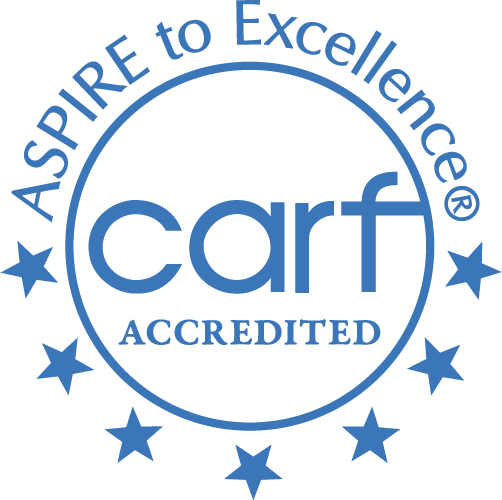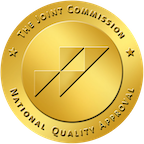Skip To Rehab Listing
Drug and Alcohol Treatment Settings and Approaches in Eaton, Ohio
Alcohol and drug abuse impacts people of all ages, genders, and walks of life. The addiction treatment facilities and resources, such as short term rehabs, long term drug rehab programs, inpatient addiction treatment programs, outpatient substance abuse counseling, inpatient detoxification programs, are intended to offer high-quality care to anyone who has a problem with substance abuse, no matter their personal circumstance.
Alcohol and drug rehab centers in the Eaton area are not all the same. They offer a range of methods, including trauma therapy, brief intervention approach, matrix model, 12-step facilitation approach, dual diagnosis drug rehab, group therapy, that enable clients to face their drug and alcohol use in the way that is most beneficial for them.
Special Services for Addiction Treatment
In spite of the widespread presence of substance abuse, each individual who struggles with alcohol and drug addiction issues has their own specific circumstances that require an individualized strategy. That is why the rehabilitation centers in Eaton offer several special services such as seniors or older adults, aftercare/continuing care, persons who have experienced sexual abuse, self-help groups, persons with serious mental illness, programs for the hearing impaired.
Treatment Payment Types
Clients and their families should not postpone recovery because of concerns about expense. Treatment programs offer several alternatives for payment, such as the following: private insurance, private pay, medicaid, medicare, sliding fee scale, access to recovery (atr) voucher, state corrections or juvenile justice funds. Addiction treatment facilities can guide clients and their families toward the payment plans that will put treatment within their reach.
Those who struggle with drug and alcohol abuse should not hesitate to take advantage of the many services available in Eaton, OH..
Commonly Asked Questions about Addiction and Treatment
What are the signs of liver damage from alcoholism?
Alcoholism, or Alcohol Use Disorder (AUD), can lead to liver damage over time as the liver struggles to process excessive amounts of alcohol. Liver damage due to alcoholism can manifest in various ways, with signs ranging from mild to severe. Some common signs of liver damage from alcoholism include:
- Jaundice: One of the most recognizable signs of liver damage is the yellowing of the skin and eyes, known as jaundice. This occurs when the liver is unable to properly process bilirubin, a waste product that accumulates in the body.
- Abdominal pain: Individuals with liver damage may experience pain or discomfort in the upper right abdomen, where the liver is located.
- Swelling in the abdomen: Liver damage can lead to the accumulation of fluid in the abdominal cavity, a condition known as ascites. This can cause swelling and discomfort in the abdomen.
- Fatigue: Impaired liver function can result in persistent fatigue, weakness, and a general lack of energy.
- Dark urine: Liver damage can cause the urine to become darker in color, often appearing brown or tea-colored.
- Pale or bloody stools: Individuals with liver damage may notice pale, clay-colored, or bloody stools, indicating that the liver is struggling to process waste products.
- Bruising or bleeding easily: The liver plays a crucial role in blood clotting. When the liver is damaged, it may struggle to produce adequate clotting factors, resulting in easy bruising or prolonged bleeding from minor cuts or injuries.
- Loss of appetite: Liver damage can lead to a decreased appetite or unexplained weight loss.
- Nausea and vomiting: Impaired liver function can cause feelings of nausea or even vomiting.
- Itchy skin: Liver damage can result in the buildup of bile salts in the skin, leading to itchiness and irritation.
- Spider angiomas: Some individuals with liver damage may develop small, spider-like blood vessels visible beneath the skin, known as spider angiomas.
- Confusion or disorientation: In advanced cases of liver damage, toxins that would normally be filtered by the liver can build up in the bloodstream and affect brain function, leading to confusion, disorientation, or even coma.
It is important to seek medical attention if you or someone you know is experiencing signs of liver damage from alcoholism. Early diagnosis and intervention can help prevent further damage and improve the chances of recovery. Treatment may include abstaining from alcohol, making lifestyle changes, and addressing any underlying health conditions contributing to liver damage.
What is the process of drug rehabilitation?
"Drug rehabilitation, also known as drug rehab, is a comprehensive process aimed at helping individuals overcome substance use disorders and achieve long-term recovery. The process of drug rehabilitation typically involves several stages and components, which may vary depending on the individual's unique needs, the type of addiction, and the chosen treatment facility. The following is an overview of the general process of drug rehabilitation:
Assessment and evaluation: The first step in drug rehab is a thorough assessment and evaluation of the individual's physical, psychological, and social circumstances. This information helps healthcare professionals determine the severity of the addiction, identify any co-occurring mental health disorders, and develop a personalized treatment plan tailored to the individual's needs.
Detoxification: Detoxification, or detox, is the process of clearing drugs and toxins from the body. Depending on the substance and severity of the addiction, detox may be medically supervised to manage withdrawal symptoms safely and alleviate discomfort. In some cases, medications may be prescribed to ease withdrawal symptoms and prevent complications.
Therapy and counseling: Once the individual is stabilized, they will participate in various forms of therapy and counseling to address the psychological and emotional aspects of addiction. These may include individual, group, or family therapy sessions, and utilize evidence-based approaches such as Cognitive Behavioral Therapy (CBT), Dialectical Behavior Therapy (DBT), or Motivational Interviewing (MI) to help individuals understand the underlying factors contributing to their addiction and develop healthy coping strategies.
Medication management: In some cases, medications may be used during the rehabilitation process to manage withdrawal symptoms, reduce cravings, or treat co-occurring mental health disorders. Medication-Assisted Treatment (MAT) is an example of this, which combines medications with counseling and behavioral therapies to treat opioid or alcohol addiction.
Education and life skills training: Drug rehabilitation programs often include educational sessions and life skills training to help individuals understand the nature of addiction and develop essential skills for maintaining sobriety, such as stress management, communication, and decision-making.
Peer support and group therapy: Engaging in peer support groups, such as Alcoholics Anonymous (AA) or Narcotics Anonymous (NA), can provide valuable encouragement, understanding, and accountability during the recovery process. These groups often play a significant role in helping individuals maintain long-term sobriety.
Aftercare planning and follow-up: As the individual approaches the end of their rehabilitation program, a comprehensive aftercare plan is developed to support their transition back into daily life and prevent relapse. This plan may include ongoing therapy, support group meetings, sober living arrangements, or other resources to help maintain recovery.
Continuous support: Recovery from addiction is a lifelong process that requires ongoing effort and support. Maintaining connections with support groups, therapists, and other individuals in recovery can be crucial in sustaining long-term sobriety and managing potential relapses."
What are substance abuse factors for lgbtq+ individuals?
Substance abuse among LGBTQ+ (lesbian, gay, bisexual, transgender, queer, and others) individuals is influenced by a range of factors. These factors often intersect and can compound the risk for developing substance use disorders. Some of the primary factors include:
- Minority Stress: Minority stress refers to the additional stressors experienced by marginalized groups, such as LGBTQ+ individuals. This includes experiences of discrimination, stigma, harassment, and violence due to their sexual orientation or gender identity. This chronic stress can contribute to increased substance use as a coping mechanism.
- Mental Health: LGBTQ+ individuals are at a higher risk for certain mental health disorders, including depression, anxiety, and post-traumatic stress disorder. These mental health conditions can increase the risk of substance use and substance use disorders.
- Social Isolation and Rejection: The process of coming out to family and friends can sometimes result in rejection or loss of social support. This isolation and rejection can increase feelings of loneliness and despair, which may contribute to substance use.
- Internalized Homophobia or Transphobia: Internalized homophobia or transphobia refers to negative feelings, beliefs, and biases about one's own sexual orientation or gender identity. This internalized stigma can lead to lower self-esteem and increased risk of substance abuse.
- Lack of Access to Culturally Competent Healthcare: Many healthcare providers lack training in LGBTQ+ health issues, including substance use disorders, leading to barriers in access to effective, culturally competent treatment.
- Social Environments and Norms: Certain LGBTQ+ social settings, such as bars or clubs, often center around alcohol or other substance use, which may normalize and facilitate substance abuse.
- Trauma: LGBTQ+ individuals experience higher rates of certain types of trauma, such as physical or sexual abuse, hate crimes, or bullying, which can increase the risk of substance use disorders.












